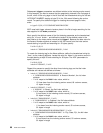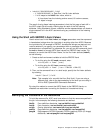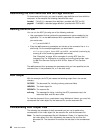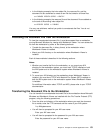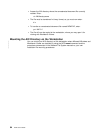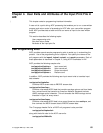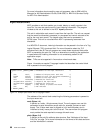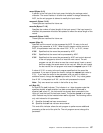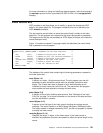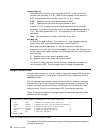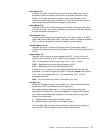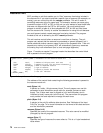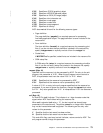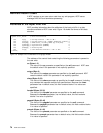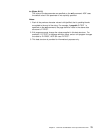Using the ACIF User Input Record Exits
The apka2e input record exit program translates data that is encoded in ASCII
(code set IBM-850) into EBCDIC (code set IBM-037) encoded data. You should
use this exit when your print job requires fonts such as GT12, which has only
EBCDIC code points defined.
To execute the apka2e input record exit program, set the following parameters as
follows in your ACIF parameter file:
inpexit=apka2e
cc=yes
cctype=z
Also, ensure that the directory where the apka2e input record exit program resides
is included in the PATH environment variable. When determining offsets for
indexing parameters, if asciinp is to be used with ACIF to produce an index file,
consideration must be made for the carriage control character inserted by asciinp
into byte 0.
The asciinp input record exit program transforms an ASCII data stream into a
record format that contains a carriage control character in byte 0 of every record. If
byte 0 of the input record is an ASCII carriage return (X'0D'), byte 0 is
transformed into an ASCII space (X'20') that causes a data stream to return and
advance one line; no character is inserted. If byte 0 of the input record is an ASCII
form feed character (X'0C'), byte 0 is transformed into an ANSI skip to channel 1
command (X'31') that serves as a form feed in the carriage control byte.
To execute the asciinp input record exit program, set the following parameters as
follows in your ACIF parameter file:
inpexit=asciinp
cc=yes
cctype=z
Also, ensure that the directory where the asciinp input record exit program resides
is included in the PATH environment variable.
Note: If asciinp is to be used with ACIF to produce an index file, consideration
must be made for the carriage control character inserted by asciinp into
byte 0, when determining offsets for indexing parameters.
The asciinpe input record exit program combines both user input record exits
described above. To execute, specify inpexit=asciinpe and follow the directions
specified for both apka2e and asciinp. Also, ensure that the directory where the
asciinpe input record exit program resides is included in the PATH environment
variable.
Note: If asciinpe is to be use d with ACIF to produce an index file, consideration
must be made for the carriage control character inserted by asciinp into
byte 0, when determining offsets for indexing parameters.
While the asciinp and asciinpe input record exits do not recognize other ASCII
printer commands, you can modify these exits to account for the following:
backspacing (X'08')
horizontal tabs (X'09')
vertical tabs (X'0B')
68 ACIF User’s Guide



